If you’re like me, you’ve probably never even heard of the Glen of Imaal. But one of the most adorbs of all terrier breeds is from this remote valley in Ireland.
The Glen of Imaal terrier (or Wicklow terrier) is one of the English antique breeds, and this tenacious terrier has a rich history that’s as unique as the Wicklow mountains from where this working dog originates.
With their rich wire coat, the Glen of Imaal terrier is a relatively low-maintenance dog that will fit into your home as a perfect family dog as long as you use appropriate early socialization.
Join me as I share the history, quirks, and facts of one of the most interesting breeds of terriers.
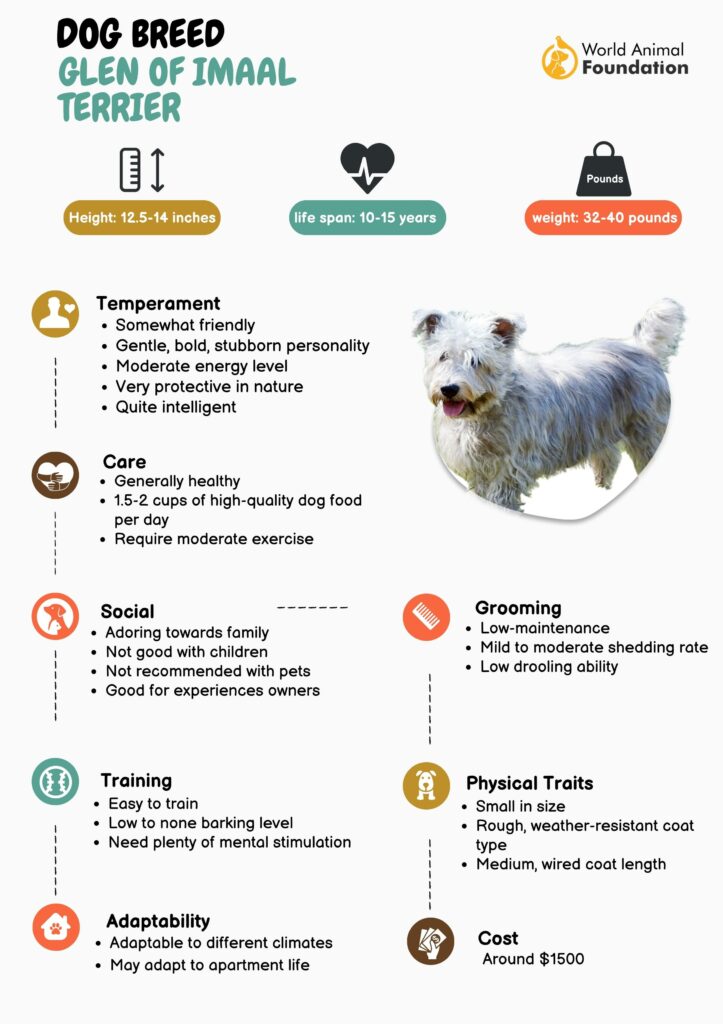
About the Breed
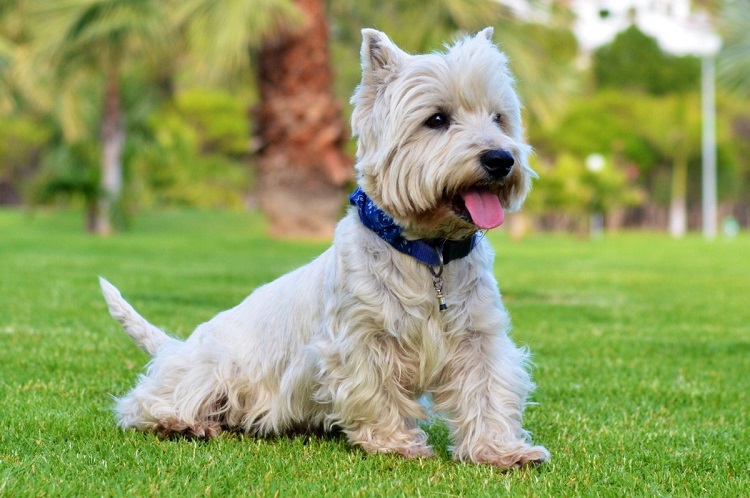
The Glen of Imaal terrier is known for their double coat, with a soft undercoat and wiry outer hairs. While these small pets may seem rather lightweight, they are known to be a working farm dog and beloved pets with a stubborn streak that needs plenty of mental stimulation.
Glen of Imaal terriers have two standard colors recognized by the American Kennel Club: blue brindle and wheaten color.
However, Glen of Imaal terriers can also show many different coat colors due to their mixed ancestry. These terriers are known to show coats in any shades of the primary coat colors. So finding cream, silver, and red tones isn’t unheard of either.
The Glen of Imaal terriers tend to be quieter than other terrier dogs, but effective training will go a long way to ensure your dog lives their best dog’s life without becoming a noisy nuisance.
Glens can be a couch potato with you while you binge on your favorite series, or they can be an active dog that drags you to the park daily, depending on your socialization and obedience training methods.
Vital Stats
- Height: 12.5 to 14 inches at the wither (shoulder)
- Weight: 32-40 pounds (but they can get obese with too little exercise)
- Life Expectancy: 10-15 years
- Energy Level: Moderate to hyperactive (they are terriers, after all)
- Trainability: Very trainable once you get over the initial stubborn streak
- Dog Type: Terrier work dog breeds
- Shedding: Mild to moderate, depending on the amount of care you put into their double coat
- Breed Status: Rare antique breed
History of the Glen of Imaal Terrier
So where did the Glen of Imaal terrier breed come from, and why did they so quickly earn a place of endearment in the hearts and minds of the Irish people? The answer lies in the rugged landscape of the furthest Wicklow valleys in Ireland.
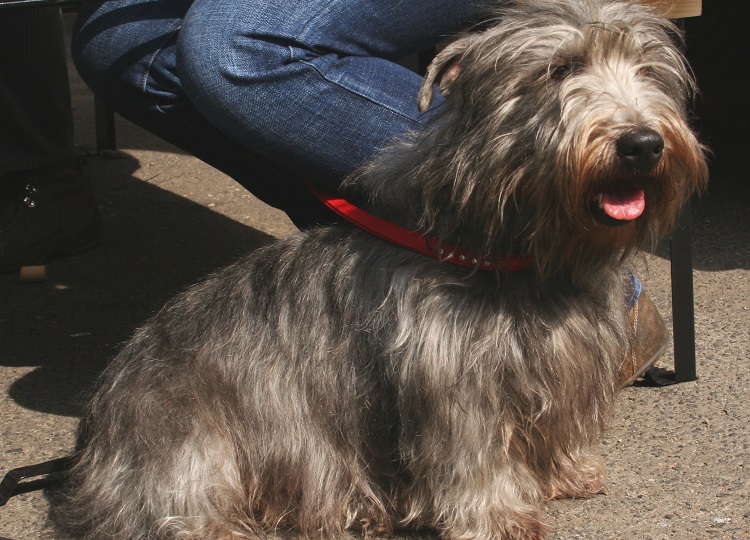
The farmers in these remote areas, like county Wicklow, had to work hard to make a living, which meant nothing that didn’t earn its keep could be kept.
Dogs had to be as hard-working as their owners, and the Glen of Imaal terriers resulted from working dogs. Glens initially hunted small prey and worked as rodent dispatchers.
The Glens were initially bred to hunt small prey, and they killed rats, rodents, and badgers, as well as foxes. Despite their small size, these sturdy dogs quickly dug out rodents and dispatched intruding pests.
The local farmers could keep smaller livestock like chickens because their Glens would hunt fox, rats, and other pests that would otherwise destroy their farm animals.
The Glen of Imaal terriers only received full recognition as one of four terrier breeds in Ireland by the Irish Kennel Club in 1933. However, the breed’s beginnings stretch much further back to the early settlers.
The breed began due to interbreeding between the local dogs and the dogs of the settlers who were given land in the Glen of Imaal as a reward for serving in Queen Elizabeth I’s army.
Glen Imaal terriers almost became extinct in the 18th and 19th centuries due to the Industrial Revolution, which saw a change in how people farmed.
There was no longer a need for a working dog bred to hunt small prey like rodents. Numbers dwindled, and it looked like the Glen of Imaal terrier would join the list of extinct antique breeds.
Thankfully, Irish breeders intervened with specific breeding programs, and the breed began to increase in numbers again, soon becoming popular as a family dog due to its more chill nature than the other terriers.
Like many other terriers, the Wicklow terrier was expressly designed to work the land next to their owners, which makes them excellent dogs for their human companions. While they are quite small, each of these Glen of Imaal terriers has a large personality inside a small dog’s body.
Interesting Facts about Glen of Imaal Terrier
Glens are fascinating dogs, and there are several interesting facts about them:
Turnspit Dogs
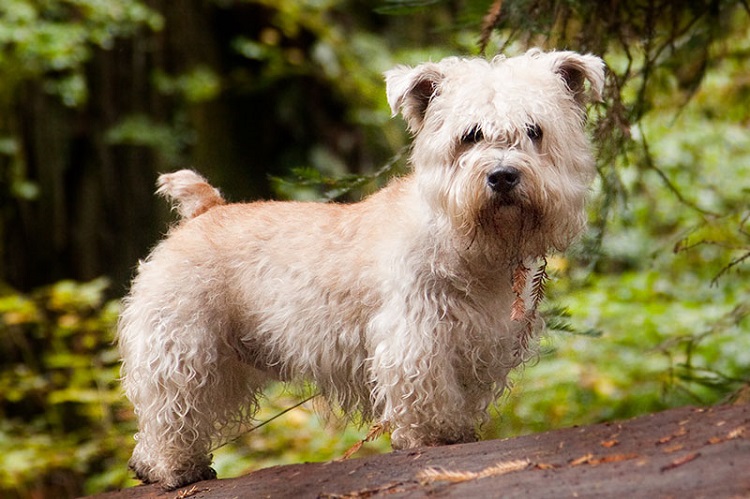
The Glen of Imaal is a dwarf breed, which means their legs are short, and often slightly bow shaped (especially in their front limbs). Because of their unique physical proportions, the early farmers discovered another neat trick to teach their Glens.
The early Glens were known as turnspit dogs. This meant the dogs were placed on a type of treadmill (aka hamster wheel) or a large wheel connected to the fire spit, allowing the dog to turn the meat being prepared.
Imagine having your dog run on a hamster wheel, and each turn helps to brown your Sunday roast on the spit (#LoveThis).
The Glen Sit
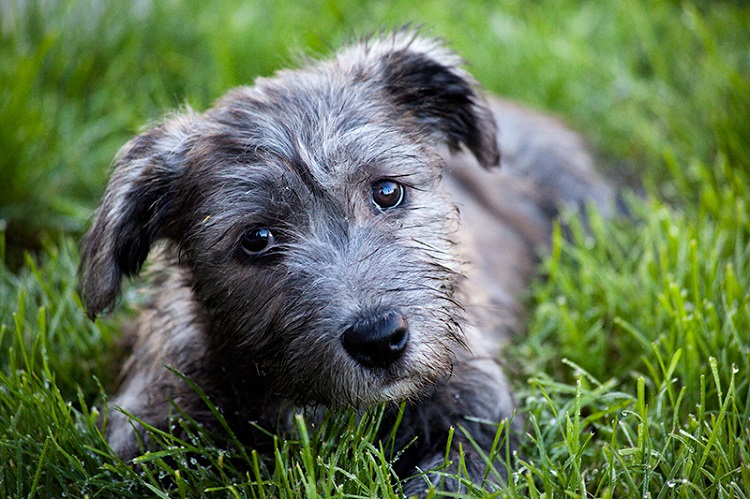
The Glen of Imaal terrier has another interesting peculiarity: the Glen Sit. The Wicklow terrier has an unusual habit of sitting up on their hind legs, raising their front legs, tucking these in, and assuming a vertical, almost hamster pose.
This is endearing, and Glen owners enjoy capitalizing on this trait and teaching it to their stocky dogs. Glens love it as it earns them a satisfying scratch behind the ears.
Glens Aren’t Cheap
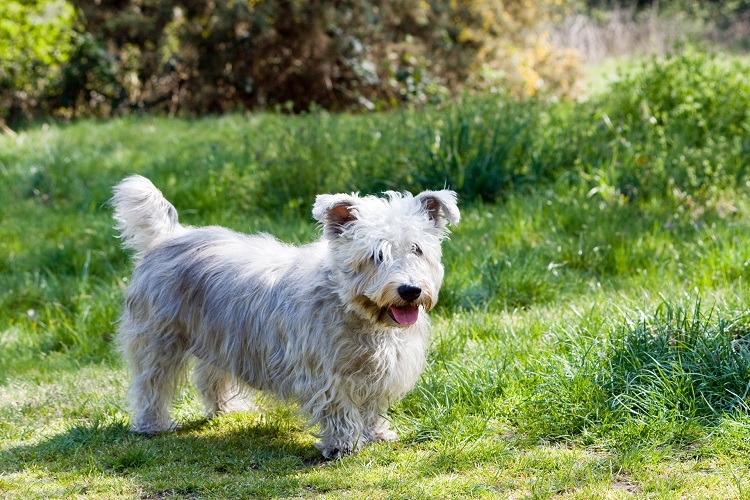
Glen of Imaal terriers aren’t cheap dogs. Purchasing a registered puppy from a reputable breeder will set you back anything from $2500 and up (especially if the parents are show dogs).
While this may seem a bit excessive, I had to remind myself that Glens are an antique and rare breed, unlike something from a local store.
Your Glen of Imaal Terrier Is Quiet
If you say “terrier,” most people automatically think of a noisy ankle-biting yapper. However, the Glen terrier is a quiet breed, and aside from warning you of strangers or intruders, Glens are mostly quiet.
Due to their past as hunting dogs, Glens aren’t known to be loud barkers as this would scare away any small prey they are hunting.
Glen of Imaal Terrier Traits & Characteristics
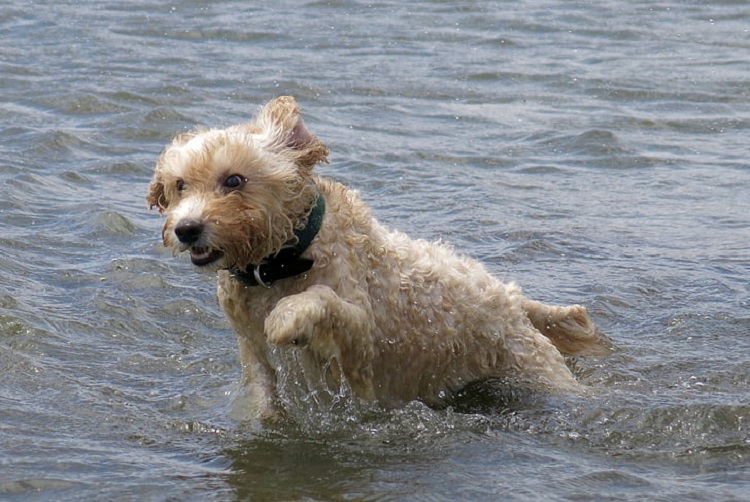
The Glen of Imaal terrier is an ideal small dog breed if you are looking for a family pet. Unlike other terriers that are prone to excitability and are high-energy dogs, Glens are more mellow and even-tempered.
Most terriers make good family pets, but the Glen of Imaal terrier is not a great choice if you have small children.
Glens are intelligent, eager to please, and love to chill with their family members. When you start working with your Glen, keep their training sessions short and interesting, as these dogs easily become bored.
I found that Glens have a natural love of digging, a throwback to when they were used for hunting rodents and vermin. And if you keep your Glen in the yard all day, you can expect to find a small mining operation from all their digging when you return.
For the most part, Glen of Imaal terriers are generally healthy, and while they tend toward weak knees and cone-rod dystrophy, breeders can screen for these conditions, so you get a healthy puppy.
Glen of Imaal Terrier Appearance
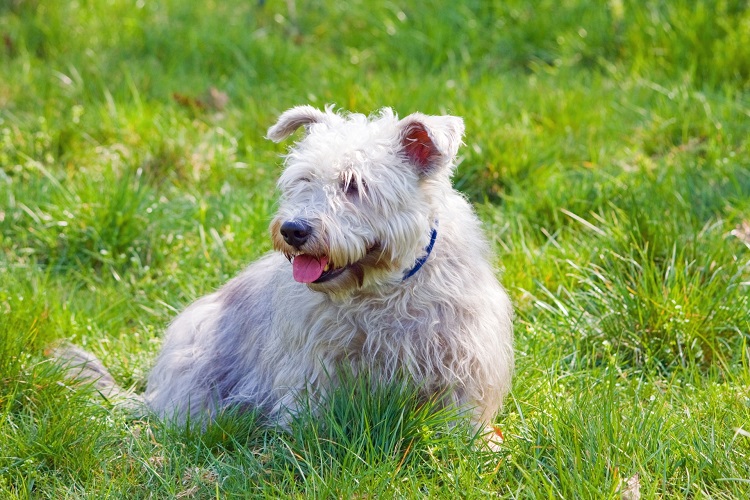
Glens are small dogs with alert brown eyes, small fold-over ears, and wiry coats.
Some owners have their Glen’s tails docked, which is the traditional look for all working dogs in England and Ireland. In the early days of this dog breed’s past, working dogs had their tails docked to avoid a “luxury tax” imposed on pet dogs.
Size
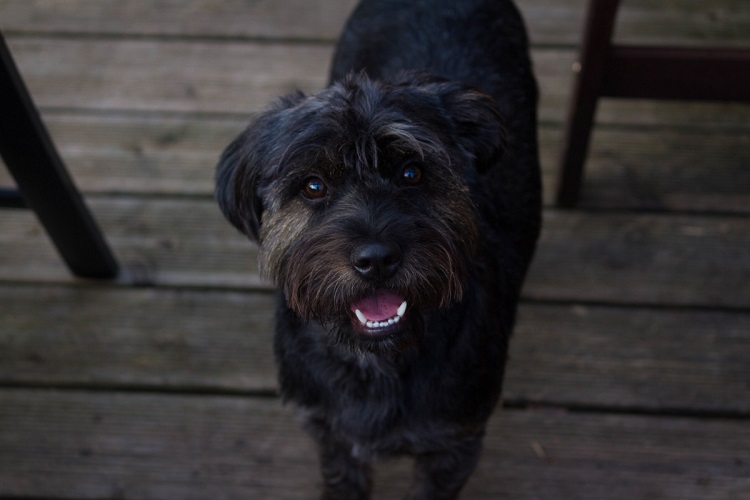
Glen of Imaal terriers don’t grow over 14 inches tall at the shoulders and, with their thick, stubby legs, are a dwarf breed. Several considerations, such as their joint health issues, must be accommodated to ensure each individual dog grows to their full potential and to avoid future issues.
Weight
The Glen of Imaal terrier can weigh up to 40 pounds, which makes them heavy enough to deal with European badgers and foxes, but small enough to hunt small prey like rats and moles that plagued early settlers in the area of the Wicklow mountains.
Today, because Glens don’t get as much exercise as they need, they can tend towards excessive body weight gain, leading to obesity. Being overweight isn’t good for Glen’s joints, especially when they are puppies and still growing.
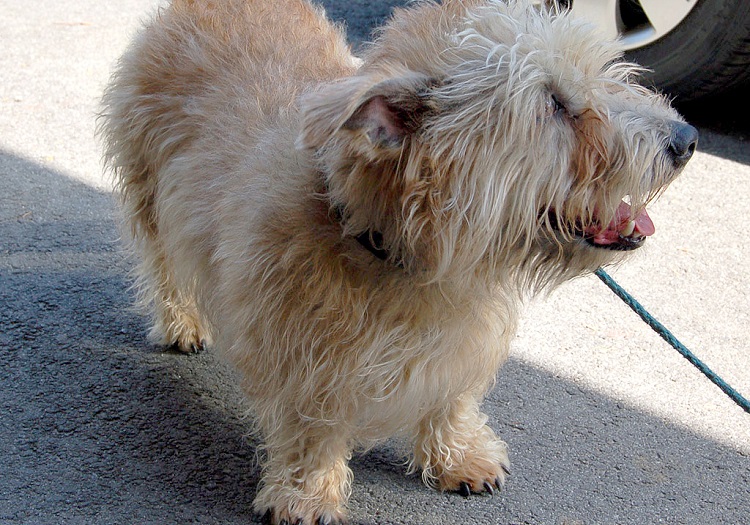
Coat
Glens are double coated, which means they have a soft undercoat, with a longer medium length, wired outer coat.
Despite having a double coat, Glens aren’t heavy shedders, and with appropriate care that involves weekly brushing and pulling, you’ll have a happy and clean Glen home.
Color
The Glen of Imaal terrier’s coat is usually a wheaten color with tints of red, silver, and gray. However, the blue brindle color is also popular and highly sought after by breeders.
Markings
Glen terriers don’t have typical markings like a Jack Russel terrier. Instead, their coats are evenly colored, with characteristic brown eyes and floppy ears.
Glen of Imaal Terrier Temperament and Personality
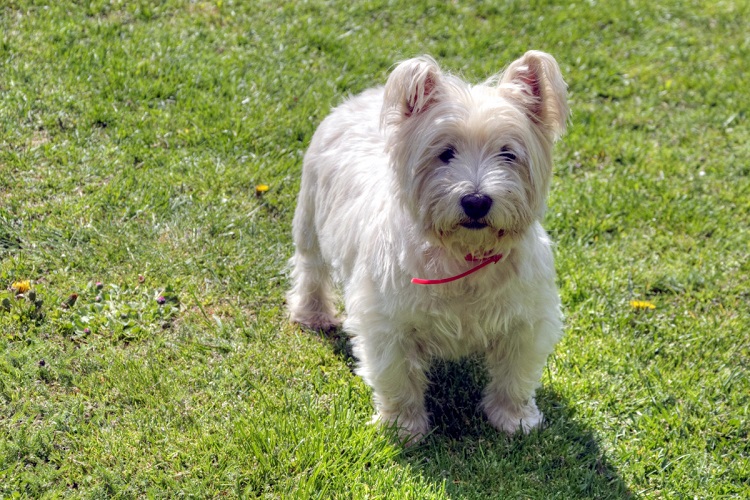
While many terriers can be aggressive, the Glen of Imaal terrier is a more even-tempered breed.
Glens can be stubborn, which is why professional training is vital to socialize them with other dogs and people. Avoid repetitive training that may bore them, as they will soon associate training with boring activities.
Glens have a moderate exercise requirement, and your Glen will love going out in nature with you, where they can dig and sniff out rodents in the brush.
Strenuous exercise is to be avoided as Glens may be sturdy, but they are known for elbow dysplasia and will resent you for making them feel uncomfortable.
Like most other terriers, Glens are said to be affectionate, and while they aren’t as prone to barking as other terriers, they are passionate diggers and will quickly tunnel up your yard if they get bored.
With their surprisingly large paws, Glens can dig out rabbits, rats, and anything else they hear underground with their sharp ears.
Earthdog trails are ideally suited to this breed of dog, and in the public eye, your Glen of Imaal terrier can dig to their heart’s content to retrieve buried items. Their strong but little legs are ideally suited to this unique task.
Glen of Imaal Terrier Health and Care
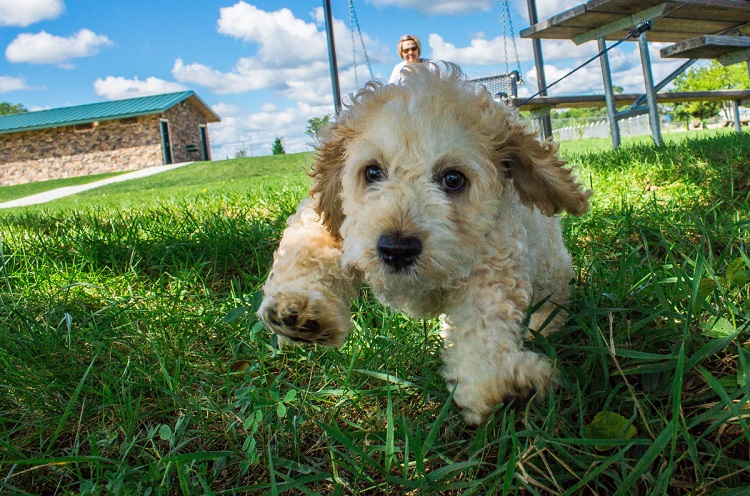
The best approach with your Glen of Imaal terrier is to make them your best friend by spending time with them and grooming them.
As with most dwarf breed dogs, the Glen of Imaal terrier must be carefully managed from birth until at least nine months. The growth plates in Glen’s front legs are especially vulnerable to impact and distortion.
Avoid letting your Glen puppies jump on or off the sofa with you. Rather set up a plump pillow by your feet for them to watch TV from.
Downward movements can be really hard for Glens due to their shorter front legs. Avoid taking them down the steps or up steep stairs as this will strain their legs and could cause serious injury or deformation (bowing) of the front legs.
Ensure you buy or adopt Glen of Imaal puppies from a reputable breeder who has scanned their breeding pairs for hip and elbow dysplasia and eye disease like progressive retinal atrophy (PRA). Hypothyroidism can also contribute to your Glen becoming overweight.
Daily care for your Glen includes brushing them three to four times a week with a good quality slicking brush.
During shedding season, pull any of the longer wire coat hair that has died and is ready to shed. Pulling hair may seem painful, but if you practice tweezing this long hair from their coat with a thumb and index finger, your dog will actually enjoy it.
With regular management, your Glen of Imaal terrier will develop a lush coat that doesn’t shed as much as other breeds.
Also, make it a habit to inspect your Glen’s ears for signs of wax buildup or excess skin cells, which all contribute to ear infections. Prevent infections by cleaning your Glen’s ears regularly with a cotton swab; your best friend will love being spoiled and taken care of so diligently.
You can also help provide for your Glen’s long-term health and life expectancy by investing in pet insurance.
Be gentle when you clean or groom your Glen terriers, as they can easily stop being affectionate and respond with a powerful bite. Grooming should be a fun activity that even children can do.
Only purchase Glen of Imaal terriers from responsible breeders who ensure the genetic disorders are not prevalent in their breeding pairs, as hip dysplasia can result in severe health issues for your puppy.
Part of your care and training of your Glen of Imaal terrier puppy should be to effectively socialize them with other animals, dogs, and children.
By being proactive, you can ward off any future issues. Glens can become aggressive if not correctly socialized, and you don’t want to be involved in a biting scenario that will require decision-making you may not want to indulge in.
Food and Diet
Owning a Glen of Imaal terrier means you need to train them to be gentle as they won’t likely be chasing after foxes, badgers, or rabbits in your area. Their health can suffer due to a lower-than-needed activity level.
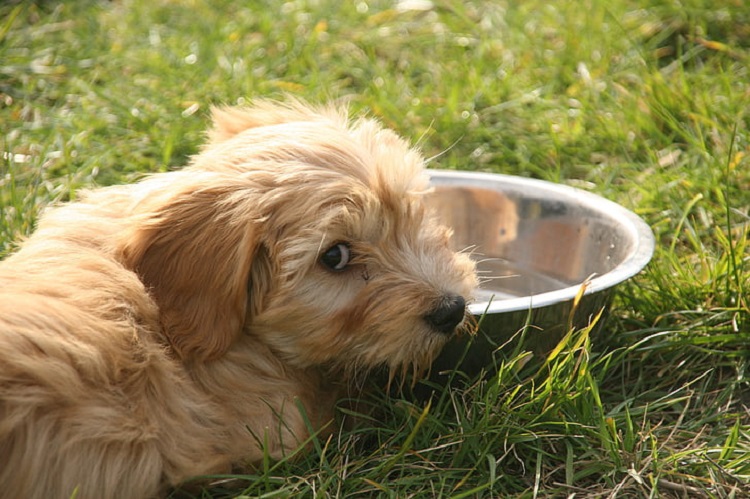
While other breeds may require specific nutrients, it’s best to feed your Glen of Imaal terrier a diet that’s balanced with additional calcium and omega acids to boost the development of their short legs and joints.
Most terriers are prone to becoming obese when they don’t get enough daily exercise. After all, these dogs were bred for work on farms, not a life of watching Netflix.
Ensure you feed enough for your Glen’s dietary needs without stuffing your Glen.
Check whether your Glen of Imaal terrier is overweight by placing your hands on either side of their spine. If you can’t feel ribs, they need less food. If you can see ribs, they need more food. Only feed high-quality dog food that is suited to these dwarf breed dogs.
Feed your Glen bones or provide chew toys to help clean their teeth and keep them in optimal health. My children love brushing our Glen’s teeth, but never let young children do this without supervision as Glens can become aggressive, especially around strangers.
Glen of Imaal Terrier Training
One of the personality traits of the Glen breed is their near absence of barking. Other terriers need to be trained to be quiet, while your Glen of Imaal terrier is naturally among the quieter dog breeds.
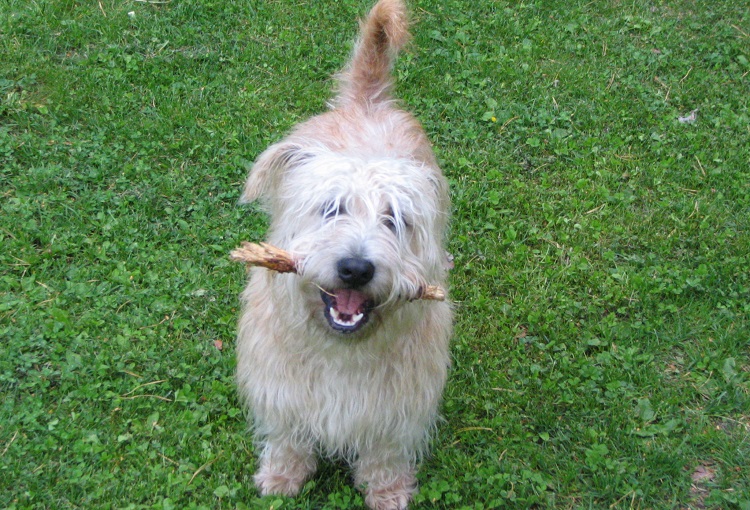
Provide mental stimulation by using toys and a unique task to keep your Glen interested. The breed naturally digs, so you can easily allocate a section of your yard to use for hiding toys that your Glen can dig up.
Glens aren’t meant to be jogging partners, so don’t buy a Glen if you want to take someone along on your morning run. Their legs are simply too short for that kind of speed, and high-impact work isn’t great for their joints.
Focus on mental stimulation with toys, hiding items, and moderate exercise activities such as walks in the park.
Be cautious when other pets are at the park, as Glen of Imaal terriers tend to see other animals as toys or rats to catch and kill. So using a harness is a requirement when you take your Glen to the dog park.
Dog training for a Glen of Imaal terrier revolves around stimulating their natural instincts—digging and hunting—to help their obedience training, curb stubbornness, and help them in activities that require decision-making skills.
Training starts the first time you pick up a brush for grooming your Glen. It’s not only ideal for bonding activities, but grooming is also great for curbing stubborn streaks, as your Glen needs to learn patience.
Full recognition should be given to owners who go the extra mile to expose their dogs to strange and scary daily items. This helps your Glen and other dog breeds develop critical thinking skills that are invaluable at dog shows.
Relationship With Family
Glens are great family dogs, but not when you have small children. The hunter instinct is too strong in these pint-size dogs to let go of a habit when they see something small wiggle in the pram or on a chair. They may not know the difference between a baby and a rodent.
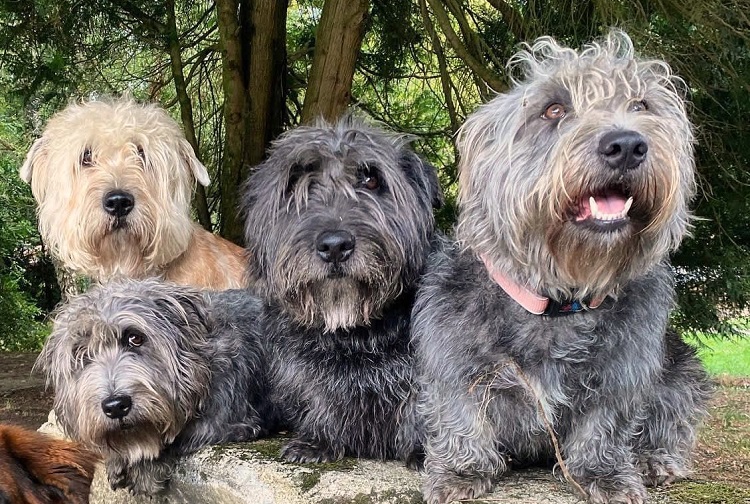
The AKC rates the Glen of Imaal terrier as one of the more docile breeds, but never take a risk regarding your family. Glens are hunters, and their instinct is to destroy something small that’s crawling on the floor (it could be a rat or a rug rat).
If your family includes other dogs, ensure you keep a wary eye on your Glens, especially when they are bored. At dog shows like those hosted by the Irish Kennel Club or the American Kennel Club, keep your Glen in a carrier or crate to prevent unnecessary aggression.
Sadly, misinformed or unprepared owners don’t always do well with a Glen as their family member. While this dog breed looks soft and fluffy, they are pint-sized lions and can easily bite other dogs or young children. As a result, Glen of Imaal terriers often end up at shelters and other rescue facilities.
While Glens don’t bark non-stop like other terrier breeds, they dig—a lot, making this dog breed somewhat difficult to manage in small urban areas. Older children do really well with a Glen as their family pet.
Rescue Groups
There are several rescue groups for Glen of Imaal terriers across the U.K. and the U.S. The main reason people give for placing such an intelligent dog up for adoption is their nature. Being too lively for a small yard or apartment living, the Glen can become quite destructive if left unattended for too long.
In these instances, it’s not a case of doing something wrong, but rather, incompatibility between the owner and their dog breed. Glens also won’t accept strangers immediately, making socializing challenging when your Glen is around if you haven’t socialized them from puppyhood.
Breed Organizations
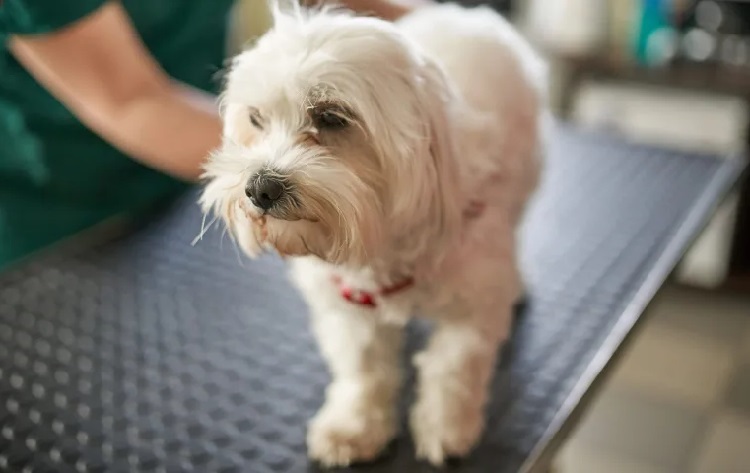
Breeders of Glen of Imaal terriers need to register as breeders with the American Kennel Club and Irish Kennel Club. Not many dogs are accepted into the Glen of Imaal Terrier registry.
To ensure the purity of the breed, all potential Glen of Imaal dogs are scanned to ensure a perfect breeding record.
Conclusion
Finally, if you want to have a Glen of Imaal terrier, you should first check with rescue facilities to help give abandoned dogs a new lease on life. Any dog can be retrained, but a Glen should never be a wallflower instead of being used for its intended purposes—digging and hunting.
Happy Earthdogging, and let your Glen learn, grow, and excel at what comes naturally as you enjoy being a proud Glen of Imaal terrier owner.


